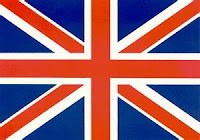Thoughts . . . . Caroline McMurray
Alberta, Canada
Happiness does not just happen; you have to work really hard for it, and still it comes in its own time.
In 1909, when Caroline McMurray was a young girl of seven, she saw her
mother die from errasipitus. She remembered fanning her mother to keep
the flies off her up in her bedroom in the days before she died. Her
little sister, Lila was 4 months old, so she really missed having a mom,
as did the four older brothers and four older sisters.
After
a while(1914) her dad married a young girl from England just two years,
who was to be the new stepmother. There was lots of work to do marrying
into a family with so many children, and she made them all work hard.
She didn't teach, instead just yelled at the kids to get the work done.
Carrie would have loved to be taught how to make bread, grow a garden,
keep a tidy English home and take care of the chickens, but instead she
resented Elizabeth trying to take her mother's place and wanted to get
away.
She wasn't very nice to the kids, so Carrie quit school early and went
to stay and help out at some of her older brother's homes. Eventually
she felt like she had worn out her welcome and that she needed a new
place to go.
. . . Carrie McMurray - Working
After staying at her different brother's homes and having the
opportunity to see different ways of doing things she was feeling rather
grown-up and felt she was ready to be out on her own.
Growing up in southern Alberta there were not many jobs available for a
young girl who wanted to earn some money. Many girls hired themselves
out as a helper to a farmer's wife. A hired girl could be the one taking
care of the children, or doing the laundry, helping with cooking or
even taking care of the animals. They could usually count on making
about one dollar a week. During this time a dollar of cash money was
worth a lot. It meant they could use the money for the necessities of
life instead of going without or using credit. No one ever really wanted
to go into debt because there was too much chance that they would not
have the money to pay when it came due.
Carrie got a job on the cook wagon for a threshing crew. She had to
provide three meals a day for a bunch of hungry men. This was really
hard work, but she learned a great deal and then was ready for another
new adventure.

The
next opportunity/adventure came in the chance to work on the Davies
farm located east of Claresholm in the Starlight District in southern
Alberta. The work on that farm was just as hard as at my own home, but
the Davies boys were all so handsome: George, Ivan, Glen, Charlie, and
Victor. the older sister, Janie had moved away and little Mary was too
young to help. Mrs. Davies really needed help. the boys were all big
enough to hlep, but they were always our helping with the farm, so she
really needed my help. i certainly never dreamed that one day she would
be my mother-in-law. Maybe she knew, and that was why she was so nice
to me. She was kind and patient and made sure I knew how to fix all the
family favorites. She taught me many different ways to serve potatoes,
and how to make a nice flaky pie crust so I could make a chicken pot pie
or a fruit pie.
. . . more about Carrie & George
When George and Carrie Davies moved to their own farm it was their great
adventure. They bought two sections of land - there is 640 acres to a
section. He was going to be a dry-land farmer and grow wheat. (as a
dry-land farmer you count on rain to water your crops)
The house was two miles south and five miles west of Carmangay. They
said the house faced east, but actually east was the direction they came
out of the house because they came out the kitchen door. The house was
small, but there was a barn with a fenced corral, and a shed and a
chicken coop.
Carrie was very excited about the chicken coop. George told her that
she could sell any eggs over what they needed and use the money any way
she wanted. She would also be able to sell the extra cream and butter.
Another opportunity for Carrie to earn some cash money was to trap and
kill gophers, the government paid a penny for each gopher tail.
Looking off her back porch Carrie could see the chicken coop about half a block away - she called the chickens "her girls".
She
made plans for a garden down the west side of the house, along the edge
of the road. She was going to plant beans, peas, cucumbers, beets,
carrots, corn, dill weed and lots of potatoes. George would dig a potato
pit which would to store the potatoes. A potato pit is dug down deep
and the pit is then lined with boards and a there is a ladder for
climbing down into the pit. The pit is covered by boards and will store
many bags of potatoes to keep them fed through the long, Canadian
winter.
Carrie really enjoyed working in the garden early on the summer days,
before it got too hot. After working in the garden for a few hours she
would come into the house and make breakfast for George. His favorite
breakfast was a steak, bread and milk gravy; but most times his
breakfast was hot cereal, usually oatmeal and hot chocolate.




















